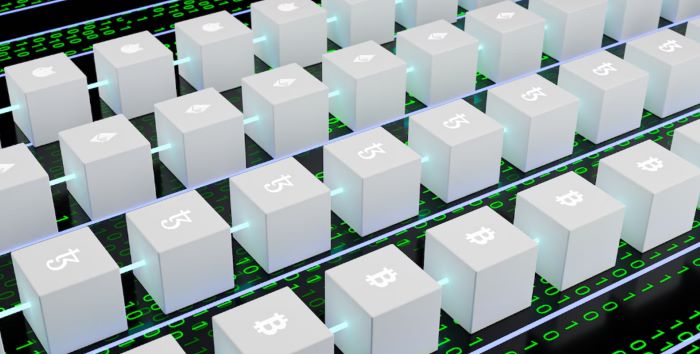
The world of crypto and blockchain is expanding, drawing in more users and transactions every day. However, with this growth comes the big challenge of making these systems handle the increasing demand smoothly, which is known as scalability. The issue is especially challenging for public blockchains, which are all about decentralization and security.
A dedicated group of crypto experts is hard at work finding solutions. Some are focusing on the main blockchain’s structure (Layer 1), while others are focusing on Layer 2 protocols that sit on top of the main network. This guide will discuss the layer-scaling solutions, along with a little explanation of layer 1 and layer 2 and how they work on blockchain networks.
Contents
What is Layer-1
Layer 1, or the base blockchain, forms the core framework of a network. It’s often called on-chain networking for scaling solutions. Some crypto networks earn the Layer 1 title because they operate with their own tokens and can process transactions on their blockchains independently. The key perk of Layer 1 networks is that their existing architecture doesn’t need any customization.
How does Layer 1 work?
Layer 1 networks help by doing different things, like handling more tasks and having more space.
- For some blockchains using Proof of Work, they might switch to Proof of Stake to do more transactions per second (TPS) and lower fees.
- When Layer 1 networks have issues handling lots of tasks, the project’s team comes up with solutions. The community might then decide to make changes, either a hard fork or a soft fork, like when Bitcoin got the SegWit update.
- Small changes work with what’s there, but big changes, like making Bitcoin’s block size larger, need a hard fork, creating two versions of the blockchain—one with the changes and one without.
- Another way to make a network better is through sharding. Sharding breaks down a blockchain’s work into smaller parts, so it can do many things at once instead of one by one.
Layer 2 blockchains are built on the base blockchain to make the network work better and handle more things. They help by taking some of the work from the main blockchain, adjusting things, managing the load, and then telling the main blockchain about the results.
Starknet, Mintlayer, and Arbitrum are some of the trending Layer 2 solutions however beginners may be curious as to what is Mintlayer. This protocol has its own blockchain, though it’s connected to Bitcoin.
How does Layer 2 work?
Layer 2 makes the main network better in four ways:
- Rollups combine off-chain transactions into one on the main chain. They use proofs to check transactions, keeping assets on the original chain.
- Sidechains are separate blockchain networks with their own validators. The main chain’s smart contract doesn’t check the sidechain, so trust is needed as the sidechain controls assets on the main chain.
- State Channels create a talking space between parties. They use part of the main blockchain for off-chain transactions.
- Nested Blockchains follow rules set by the main chain. The main chain handles disputes but doesn’t directly do transactions.
What is Blockchain Scalability?
As blockchain is playing a big role in the world economy, it faces a challenge called the Blockchain Trilemma—balancing decentralization, security, and scalability.
Decentralization spreads computing power and agreement across the network, and security defends against attacks. Both are crucial for blockchain.
Scalability is equally important. It means a blockchain can handle lots of transactions quickly to compete with established systems. For instance, Bitcoin does 4–7 transactions per second (TPS), while Visa manages thousands. To solve this, a new wave of blockchains and scaling solutions, like Layer-1 and Layer-2, are working to boost scalability.
Layer-1 Scaling Solutions
Layer-1 scaling solutions are all about making the main blockchain better and faster. They directly change the main blockchain’s rules to handle more transactions quickly and accept more users and data.
To amp up a blockchain and make it a Layer-1 network, some cool updates happen:
- Consensus Protocol Boost: The common Proof of Work (PoW) method, seen in Bitcoin, needs a lot of computing power and can be slow. Newer blockchains like Proof of Stake (PoS) let people validate transactions by putting up some collateral, making things faster and more efficient. Ethereum is actually shifting to PoS with Ethereum 2.0 to make things way better.
- Sharding Magic: Sharding is a bit like splitting a big task into smaller parts. It takes the whole blockchain and breaks it into smaller pieces called “shards.” These shards get processed at the same time, handling lots of transactions in order. Instead of every computer storing the whole blockchain, each one deals with just a part, making everything run smoother. Shards chat with each other to share information, like addresses and balances, making the whole network work better.
Layer-2 Scaling Solutions
Layer-2 scaling solutions make blockchains work better by adding an extra layer on top by including the following solutions:
- Nested blockchains: It’s like having a mini-blockchain inside a bigger one. The main blockchain sets the rules, and smaller chains do the heavy lifting. OMG Plasma is an example used on the Ethereum network to make transactions faster and cheaper.
- State channels: These help communication between the blockchain and off-chain channels, improving overall transaction speed. Liquid Network, Celer, Bitcoin Lightning, and Ethereum’s Raiden Network use state channels to get things done faster. They give up a bit of decentralization for more speed.
- Sidechains: Think of them as separate lanes for big transactions. Sidechains have their own way of agreeing on things, making them fast and scalable. They don’t mess with the main blockchain or other sidechains. Setting up a sidechain takes effort, but it’s worth it for certain types of transactions.
Final Notes
In the decentralized world, a Layer-1 network is like a main blockchain (think Bitcoin or Ethereum), and a Layer-2 protocol is an extra tool that works with it. However, many blockchain networks are trying to achieve a good combination of Layer-1 and Layer-2 scaling solutions.
